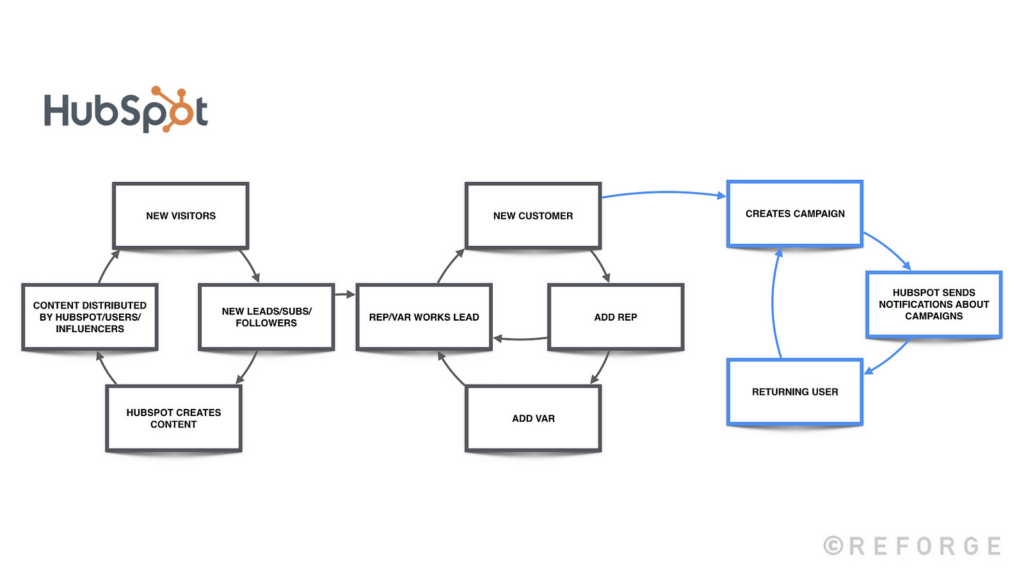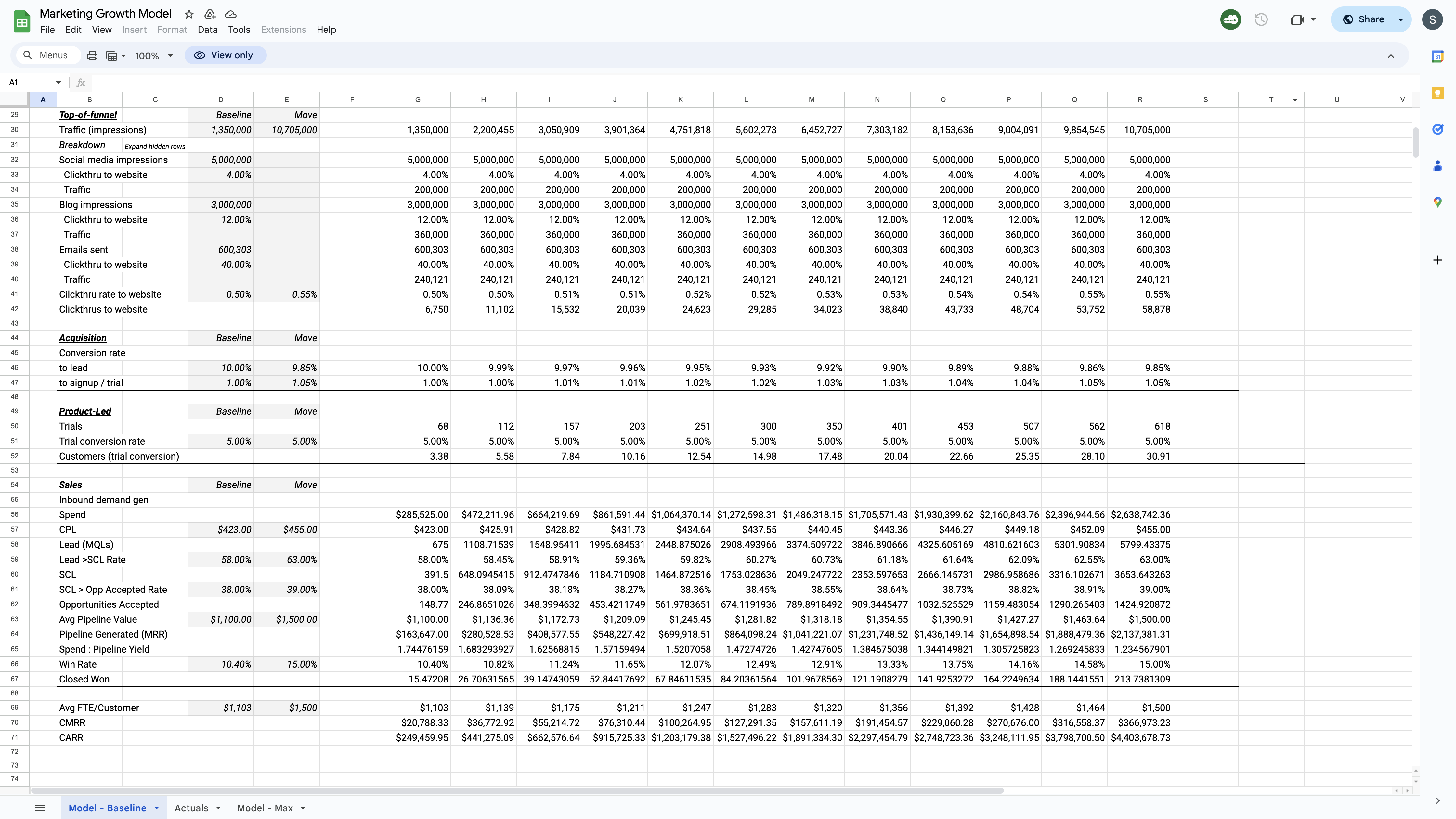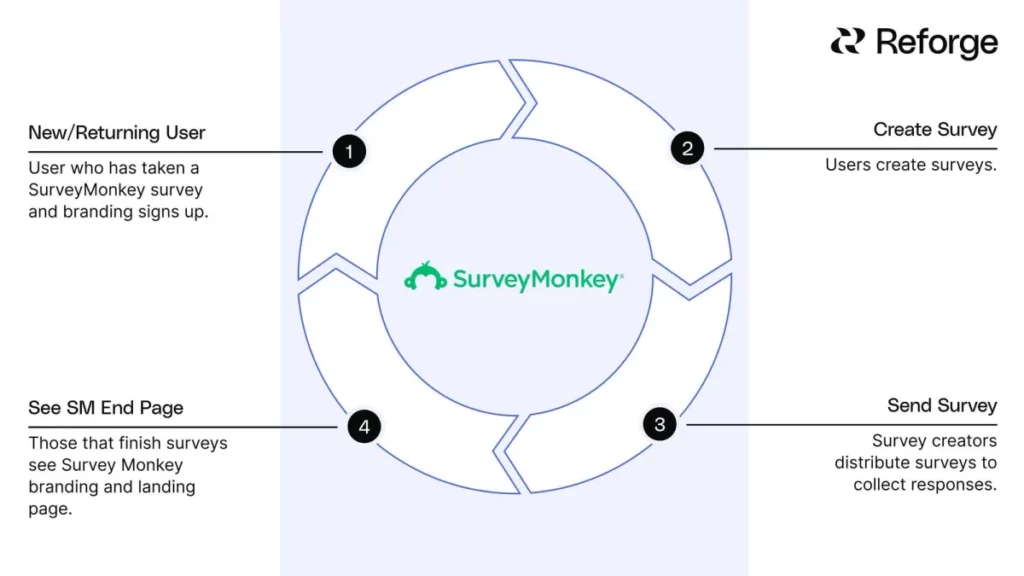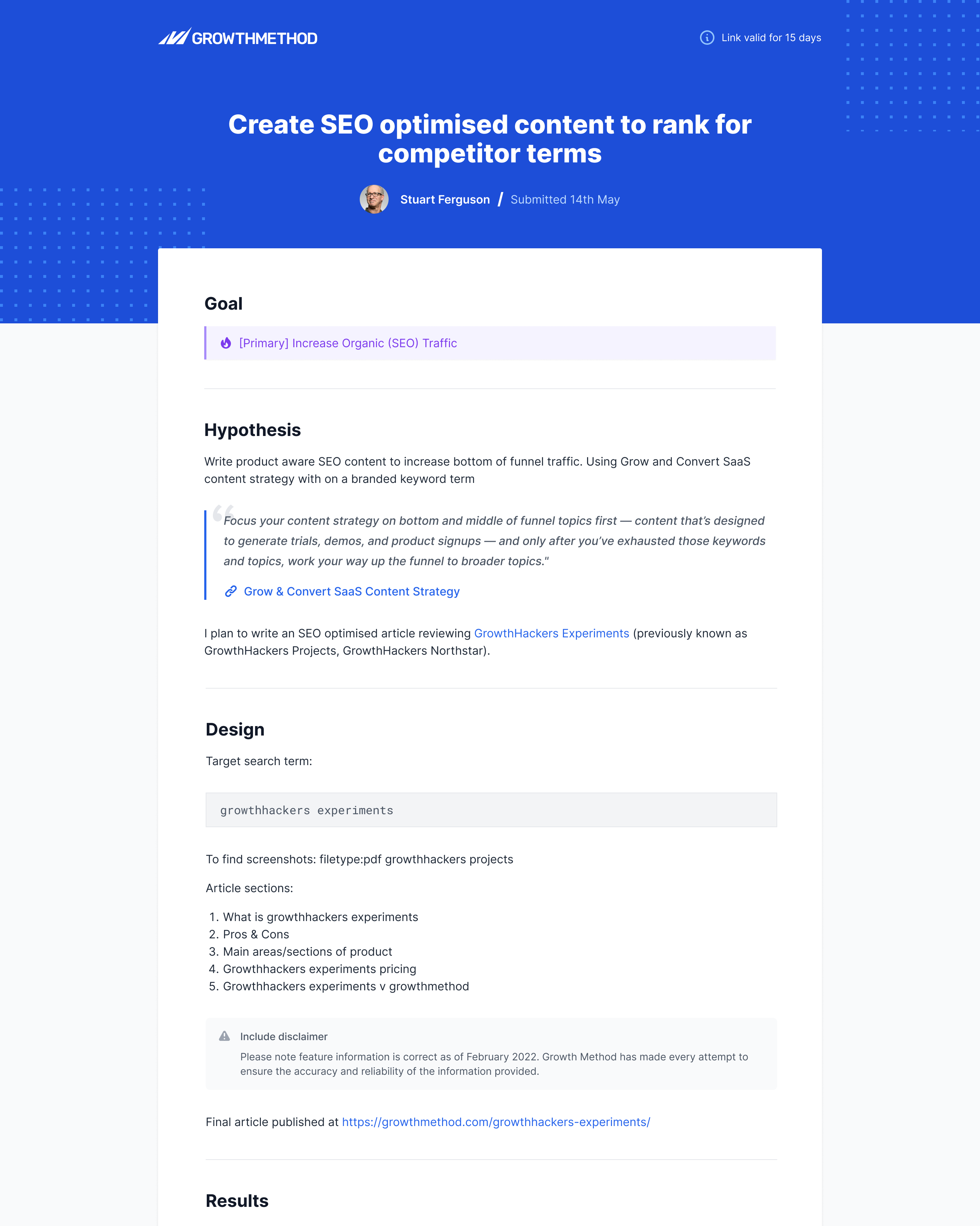Understanding Your Growth Model
Article originally published in October 2022 by Stuart Brameld. Most recent update in April 2024.
Request a demo
Project management for growth and agile marketing professionals. Map your acquisition funnel, integrate analytics and run agile experiments.
Experiment results
Recent experiments results include competitor SEO, AI-driven content, exit-intent modals and AB testing homepage headlines.
Case study
"We are on-track to deliver a 43% increase in inbound leads this year. There is no doubt the adoption of Growth Method is the primary driver behind these results."
![]()
Certified
We are vetted mentors with Growth Mentor and a partner with the Agile Marketing Alliance.
What is a growth model?
A growth model helps to answer the question – “How do you grow?”
“A growth model is a predictable, sustainable, and defensible strategy that helps you achieve maximum distribution in the market.”
Lenny Rachitsky
It is a document used by businesses to create a conceptual understanding of how all the different parts of your business come together to generate sustainable growth.
At its core, a growth model boils down to a way to conceptualize and summarize your business in a simple equation, which allows you to think about growth in a holistic and structured way.
Hila Qu, Gitlab
Why is a growth model useful?
In addition to providing clarity and understanding across your team and company, and helping everyone make better decisions, a growth model:
- Supports goal setting, planning and forecasting
- Helps to identify which methods are more effective at acquiring new customers
- Helps to guide and prioritise resource investment, and where to focus to achieve the biggest wins?
- Guides key metrics to measure and set goals against
- Deepens everyone’s understanding of the business
With a growth model in place, and with historical data, you are able to run more accurate growth simulations and generate more detailed forecasts. For example, you could pull different growth levers (such as investing in improving acquisition vs retention, or paid search vs organic search) to see what would have the the biggest impact on leads and sales.
Visual versus mathematical growth models
There are typically 2 ways to represent all the different elements that contribute to growing your business:
- A visual representation
- A mathematical representation
A visual growth model is a more qualitative, simple representation of how you grow and it’s where we recommend most companies start. The map above gives you a visual sense of how you grow Using the map above, start looking for points of leverage. Lean on the questions, “What can we reasonably increase?” and “What impact will an X% increase have on outcomes?” to guide your analysis.

A growth model is a visual representation of the acquisition model a business uses to grow and sustain its customer base
Grow Using Data Course by Segment
A mathematical growth modal is more quantitative and generally built using a spreadsheet – you can think of this more like a formula for your business that lives in Excel. One of the biggest challenges to building a quantitative model is the accuracy of your assumptions, such as channel conversion rates, or costs/CPM for paid traffic (at the acquisition stage).

A growth model is a mathematical representation of your users
Jon Butterfield
In the context of growth marketing we suggest thinking about your growth model through a visual lens to start with, and layer on the quantitative data over time. One of the main advantages to developing this conceptual model of your business is that it forces everyone involved to really understand how the business works.
Macro vs micro growth models
When developing growth models teams will often build a basic high level conceptual model that describes how the whole system works, and each team may have a smaller “mini model” that specifically describes what they are working on day-to-day in more detail. Often this mini-model forms a core part of the team strategy document.
Whilst individual team tactics can be used to zoom in and optimise individual loops, the entire model must be well understood first. In order to build out micro/mini growth models, each team should have a core metric (North Star metric) and be able to articulate and understand all of the inputs that drive that core metric.

Linear vs non-linear growth models
The difference between linear and non-linear growth models lies primarily in how they predict growth over time, based on the relationship between variables.
As an example, if a business currently receives 1000 visitors a month and generates 10 conversions (leads) from that traffic, the conversion rate is 1%. Assuming a constant and linear relationship between traffic and conversions you could therefore assume that if they were able to grow to 5000 website visitors a month this would generate 50 new leads per month. These more linear funnels are typical in traditional marketing teams.
The advantage of this linear relationship lies in its simplicity, making it easy to predict outcomes and to forecast based on changes in traffic. Whilst this is by far the most common use-case be aware that in real-world scenarios there is often some kind of tension or external factors impacting these variables that result in non-linear models being necessary to accurately predict outcomes. In growth marketing, non-linear growth often occurs for the following reasons:
- Market saturation
- Changes in consumer behaviour
- Diminishing returns on spend
From a business perspective, non-linear growth can have a big impact on how fast your business can grow. Virality is the most well-known and basic example here where a business has a mechanism such that existing customers refer new customers, who go on to refer new customers, and so on.
Growth models vs growth loops
Whilst historically the AARRR funnel framework has become the dominant way to think about marketing and growth, more recently growth practitioners have focused on the concept of growth loops. The core idea behind growth loops being that an output of a system can be reinvested as an input of a system.
While linear tactics do help us gather our first users, they also require us to constantly put more into the funnel for one-directional input and output. In contrast, a growth loop creates an always-on process where one cohort of users feeds into the next.
https://www.reforge.com/podcast/unsolicited-feedback/episode-8

Growth practitioners generally agree there are four main types of acquisition loops
- Viral loop
- Content loop
- Paid loop
- Sales loop
Building your first growth model
The basic building blocks for most businesses are acquisition, retention and monetisation with your growth model as:
Acquisition x Retention x Monetisation = Revenue
Whilst additional complexity and nuance can be layered on top, this is a great starting point for most businesses.
| Growth lever | Growth lever detail |
|---|---|
| Acquisition | where is traffic coming from? how much are you getting and how it is converting. are you looking at paid marketing, sales, viral customer referrals etc. for each of these have different assumptions around traffic, spend and conversion rate |
| Retention | at what rate are the customers activating, and have some basic monthly retention curve – how long are they staying around/what is the survival rate of each over time. how long are they staying around. |
| Monetisation | paying some monthly or annual fee which translates into revenue |
As above, a simple visual representation is likely best for most growth and growth marketing teams. Keep it simple, particularly if your business is small or early stage, or if your channel mix is simple, as it likely makes more sense to invest time in growing users and customers, rather than building a growth model.
Surprising learnings from growth models
A few surprising learnings to keep in mind:
- Overall growth is very sensitive to your customer retention rate. A healthy retained customer base influences many other areas of your business. Often a small gain in retention is more valuable than a bigger gain elsewhere.
- Marketing and growth teams often focus on acqusition and the early customer experience rather than cross-sell and upsell deeper in the customer journey where they can have more significant impact on customer LTV and retention
- It is much easier to move top-level acqusition metrics than lower retention metrics. Moving retention and LTV also requires a much deeper understanding of the entire customer journey
- Counterintuitively, often the biggest successes in retention result from a better user/onboarding experience for new customers
“Statistically speaking, a 1% improvement in the lowest number will yield the biggest uplift. Practically speaking, however, increasing the lowest conversion rate might be the hardest and most time-consuming thing to do. As the Growth team, we have to find a balance between trying to improve the lowest and most difficult metric while also delivering quick wins. Sometimes those quicker wins are better because they have a compounding effect that we are able to realize earlier.”
Ross Nazarenko
Growth model questions for your business
When thinking about the growth model for your business, consider the following questions:
- How/how do you think your business grows?
- What are all the ways that your business acquires customers?
- What are your core growth loops?
- How can your business grow in a way that is different from that of your competitors?
Additional related questions that may be helpful to consider:
- What is your customer journey? Do you have a customer journey map that indicates this step by step?
- What is your growth/go-to-market motion? Marketing-led, community-led, product-led, sales-led?
- Which go-to-market motion do you need to built-out, optimise or introduce?
- What are your growth levers in:
- Acquisition: How do you acquire customers?
- Retention: How do you activate and engage your customers?
- Monetisation: How do you monetise your customers?
- Which growth lever do you need to drive the most improvement for?
- What are your core growth loops?
- What is your north star metric? What is the core value of your business and identify the metric that indicates the core value is delivered to your customers
In conclusion
It doesn’t matter how effective your growth strategy is if you can’t align individuals, teams and the wider company around it, and including a growth model as part of your growth marketing strategy is one of the best ways to do this. It helps build a cohesive narrative, helps teams to make better decisions and to assess opportunities for the business.
Related resources
- High Tempo Testing with a Growth Model https://www.youtube.com/watch?v=6Gf4WI2t0JU
- Developing a growth model + marketplace growth strategy https://www.lennysnewsletter.com/p/developing-a-growth-model-marketplace
- What is a Growth Model? + How to Identify Your Company’s https://segment.com/academy/grow-using-data/identify-your-companys-growth-model/
- Finding Your Company’s Next Growth Opportunity https://www.fishmanafnewsletter.com/p/how-to-build-a-growth-model-ruslan-nazarenko
- Building Your First Growth Model https://www.speedinvest.com/blog/building-your-first-growth-model
- Growth model https://kevanlee.substack.com/p/320-growth-model-


